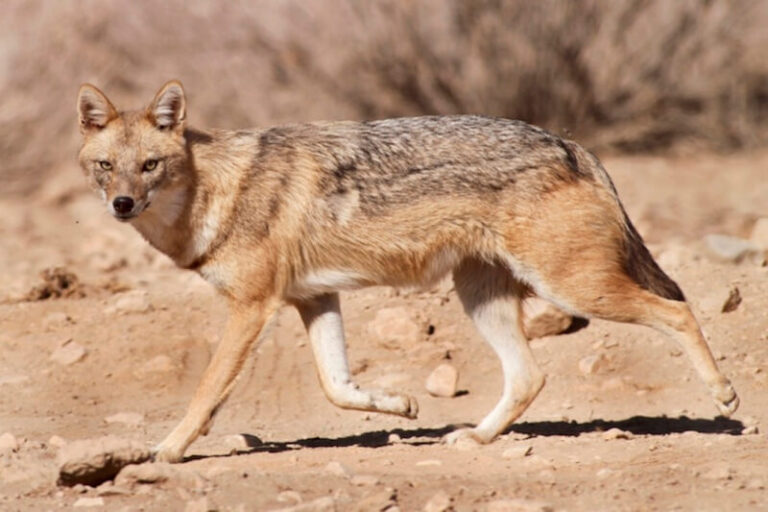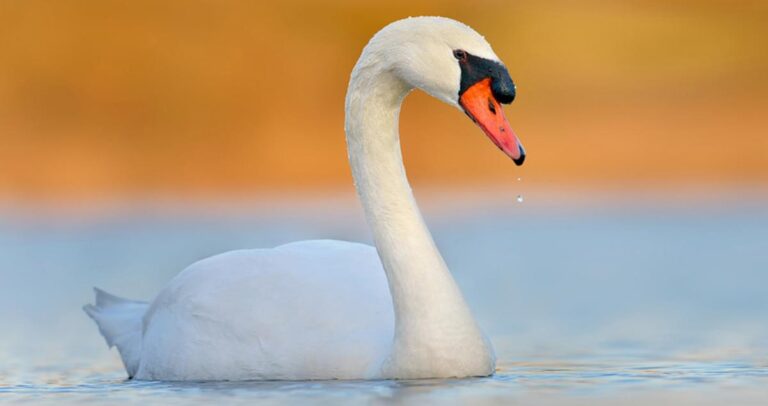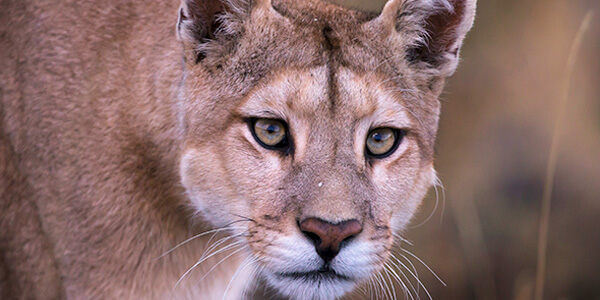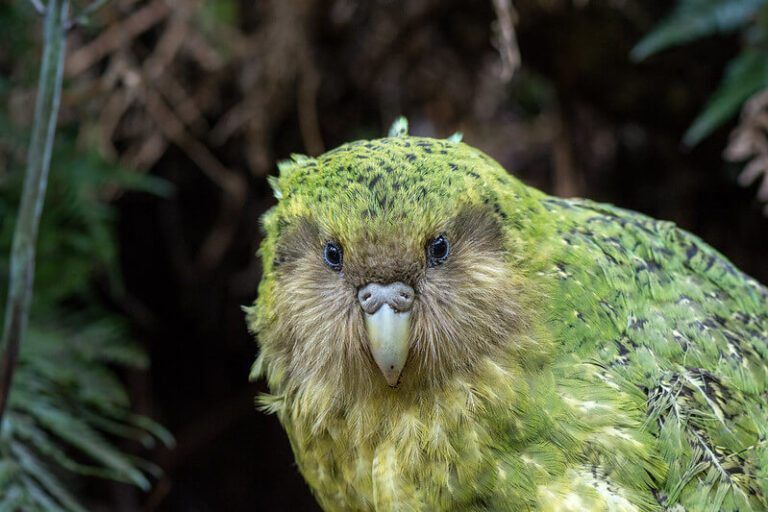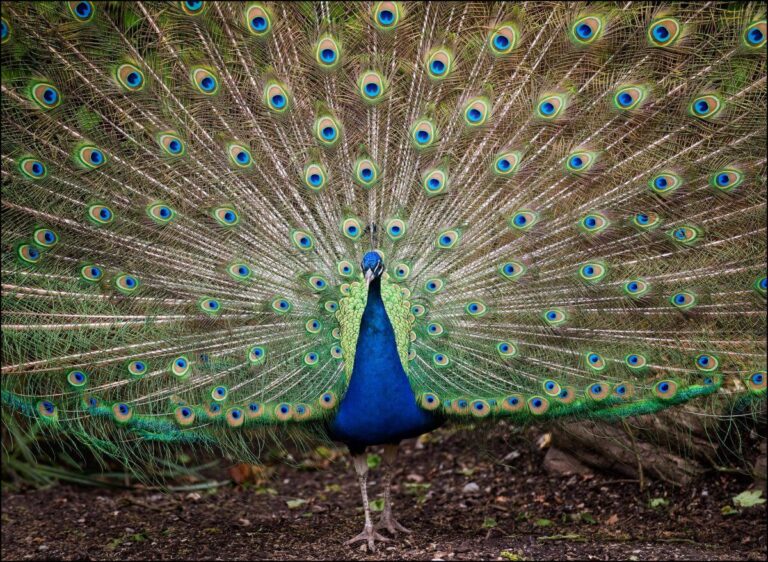Kinkajou: The Tree-Dwelling Night Wanderer
The Kinkajou (Potos flavus) is an intriguing mammal native to the tropical forests of Central and South America. Though its appearance might resemble a monkey or a lemur, the kinkajou is part of the Procyonidae family, including raccoons. With its unique adaptations, nocturnal habits, and arboreal lifestyle, the kinkajou has fascinated wildlife enthusiasts and researchers.
Contents
Scientific Classification
- Kingdom: Animalia
- Phylum: Chordata
- Class: Mammalia
- Order: Carnivora
- Family: Procyonidae
- Genus: Potos
- Species: Potos flavus
Physical Characteristics

The kinkajou has a striking appearance sets it apart from many other forest animals. Here are its notable physical features:
- Size: Adults range from 16 to 24 inches in body length, with a tail that adds 15 to 22 inches. They typically weigh between 3 to 10 pounds.
- Fur: It boasts a short, dense, and woolly coat that ranges from golden brown to grayish-brown, helping it blend into its environment.
- Tail: Its prehensile tail is one of its most significant adaptations, used for balance and grasping branches as it navigates through the treetops.
- Eyes: Large, forward-facing eyes aid in excellent night vision, essential for its nocturnal lifestyle.
- Tongue: Kinkajous possess a long, slender tongue (up to 5 inches long), which they use to extract nectar and fruits.
Habitat and Distribution
Kinkajous are primarily found in tropical rainforests, but they also inhabit cloud forests and occasionally drier forests at elevations ranging from sea level to 2,500 meters. Their range extends from southern Mexico through Central America to northern South America, including countries like Brazil, Venezuela, and Ecuador.
Behavior

Kinkajous are nocturnal and arboreal, spending nearly all their time in the trees. They are solitary or live in small family groups and are known for their curious and playful nature. As nocturnal foragers, they are most active during the night, using their solid and prehensile tails for balance as they move through the forest canopy for food.
Kinkajous are known for their agility and ability to rotate their feet backward to climb down trees headfirst. They communicate through vocalizations, including squeaks, hisses, and barks, and their calls can carry long distances through the dense forest.
Diet
Despite being classified as a carnivore, the kinkajou’s diet is mainly frugivorous (fruit-eating), with over 90% of its diet consisting of fruit. Their favorite fruits include figs, bananas, and guavas. Their long tongue allows them to feed on nectar and flower blossoms, and in doing so, they play a role in pollination, particularly for balsa trees.
Occasionally, kinkajous may eat small vertebrates, insects, or eggs, but these form a tiny part of their diet.
Reproduction
Kinkajous typically breed year-round in their tropical habitats. Females give birth to one or two offspring after a gestation period of about 112 to 118 days. The young kinkajous are born blind and helpless, relying heavily on their mothers for the first few weeks of life. They remain with the mother for several months, learning essential survival skills, including foraging and navigating the treetops.
Predators and Threats
In the wild, kinkajous face threats from several predators, including large birds of prey like owls, jaguars and ocelots. Their arboreal lifestyle and nocturnal habits help reduce the risk of predation, and their sharp claws and agility make them difficult prey to catch.
Human activity poses a significant threat to kinkajous. Habitat loss due to deforestation and fragmentation in their tropical forest homes is their primary challenge. Additionally, they are sometimes hunted for the pet trade or their fur, though this is less common than other wildlife species.
Conservation Status
The IUCN Red List currently classifies the kinkajou as a species of Least Concern, but their populations are thought to be declining due to ongoing habitat destruction. Conservation efforts that focus on preserving tropical rainforests are essential to ensuring their continued survival in the wild.
Evolutionary History
Kinkajous belongs to the Procyonidae family, which includes raccoons, olingos, and coatis. Fossil evidence suggests that kinkajous have been part of the neotropical ecosystems for millions of years, with ancestors possibly diverging from their raccoon relatives in the late Miocene epoch.
Their arboreal adaptations and frugivorous diet are thought to have evolved in response to tropical forests’ dense, fruit-rich canopies. Their evolutionary path highlights the flexibility and diversity within the carnivore order, with some species, like the kinkajou, evolving more herbivorous feeding strategies.
Relationship with Humans
While kinkajous are not domesticated, they have occasionally been kept as exotic pets due to their playful and curious nature. However, this is discouraged as they have specialized needs and behaviors that can be challenging to meet in captivity. In some regions, kinkajous are hunted for their fur or as part of the illegal wildlife trade, but this is relatively rare compared to other species.
Kinkajous play an essential ecological role in their habitats, particularly as seed dispersers and pollinators. They are crucial to the health of tropical ecosystems, and their presence in the wild helps maintain biodiversity.
Interesting Facts
- Kinkajous are sometimes called “honey bears” because they use their long tongues to lick honey from beehives, though this behavior is rare.
- They are capable of rotating their feet backward, enabling them to run efficiently in either direction along branches.
- Despite their raccoon-like classification, kinkajous share behavioral similarities with primates due to their arboreal and frugivorous lifestyles.
Conclusion
The kinkajou is a remarkable and lesser-known mammal that showcases the diversity of life in tropical forests. From their agile, nocturnal lifestyle to their role in pollination, these animals are a crucial part of the ecosystems they inhabit. Conservation efforts to protect their habitats are essential to ensuring that future generations can continue to witness the beauty of these “honey bears” in the wild.
- Golden Retriever Pros and Cons: What Every Pet Parent Should Know - 15 September 2025
- Cane Corso Dog Breed: Health, Care, and Lifespan - 14 September 2025
- Catahoula Leopard Dogs: Description, Temperament, Lifespan, & Facts - 21 July 2025


